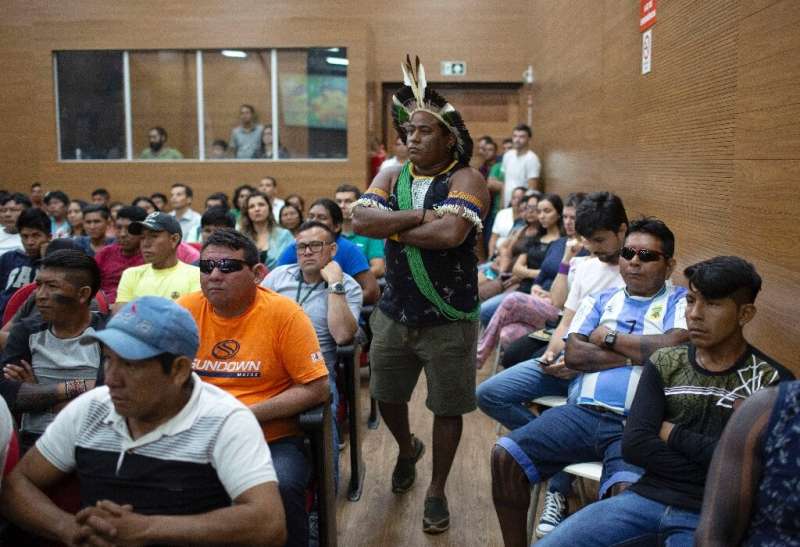Reviving Brazil's indigenous languages

Thousands of indigenous languages have disappeared in Brazil since it was colonized by Portugal in the 16th century.
But more than 200 still survive in Latin America's biggest country, including one that was "resuscitated"—with the help of its last remaining speaker—by experts at the Federal University of Para in northern Brazil.
Nelivaldo Cardoso Santana, a linguistics professor, tells AFP how he and his team were able to help 80 Xipaya indigenous people from the Xingu region learn to speak their ancestral language.
Linguistic traces
"People have long thought that only Tupi and Guarani, the two best known indigenous languages, were spoken. But there are many more, with many dialects," explains Santana.
"It is estimated that there were more than 3,000 of them before the colonizers arrived," he said.
"Contact with Europeans unleashed the slow death of indigenous languages. But curiously, even some of the languages that have disappeared have ended up leaving traces in Portuguese as it is spoken in Brazil, such as abacaxi for pineapple, for example."
Resuscitation
In the case of Xipaya, the university's work at resurrecting Xipaya was no small task.
The indigenous group had "scattered—most of them were working as farm laborers for large landowners," Santana explained.
"They gradually got together in the 1990s and obtained land where they could settle, but they no longer spoke their language," he said.
The last known speaker was an elderly woman.
"We recorded her talking and singing, and we developed a basic grammar," the professor said.
"Then the Indians organized cooking or craft workshops with her, giving the food or plant names in the ancestral language," he added.
"Today about 80 of the Xipaya sing in this language during their festivals, formulating new sentences, and even using it to choose the names of their children."
Best teaching methods
The next step? While training people to teach the language to new students is an option, Santana says a better plan is to focus on "adult workshops, so that they can talk to their children."
"For children to really express themselves in their indigenous language, they need to start speaking it at home from an early age with their parents," he said.
But he noted: "As a general rule, it is important for teachers to be indigenous and to be trained in bilingual teaching methods with appropriate textbooks.
"For that to happen, it would need real political will, which is lacking here in Para, where the authorities favor teaching Portuguese to the detriment of the indigenous languages."
© 2019 AFP


















